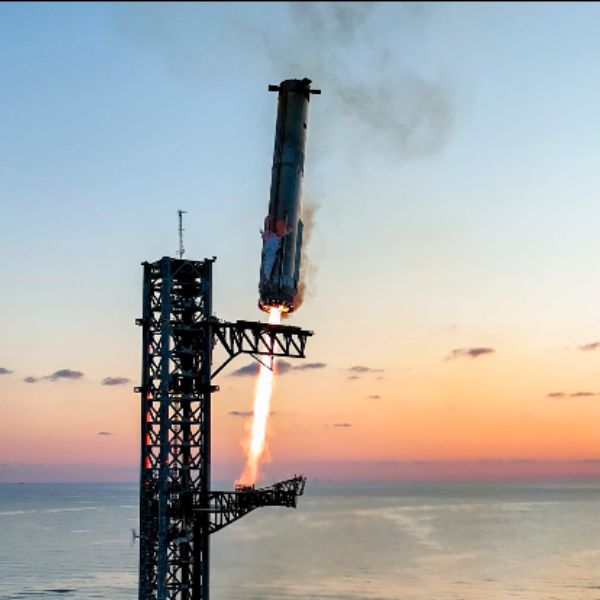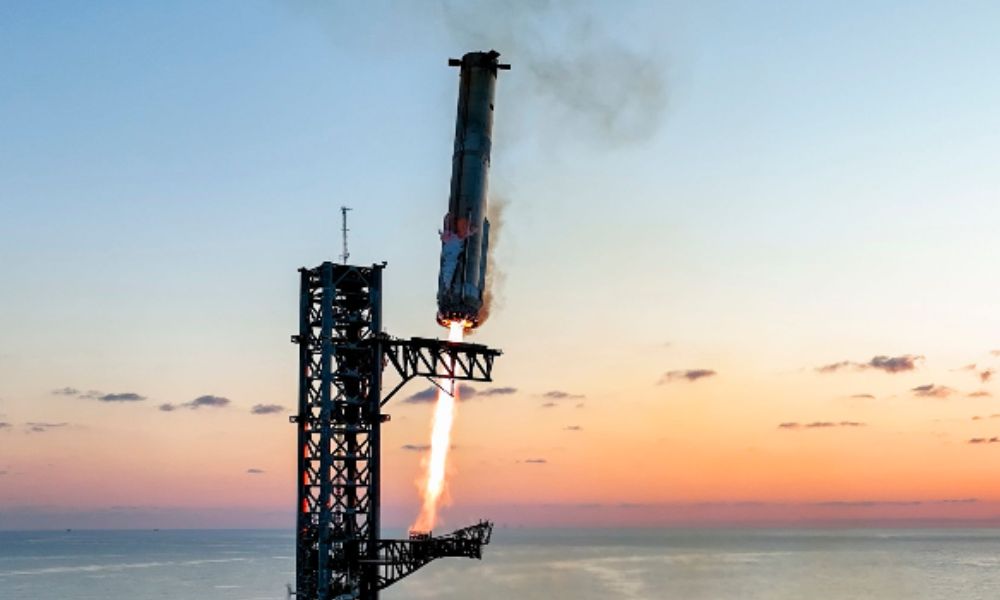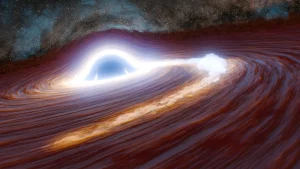SpaceX Successfully Catches Starship Booster with “Chopsticks”

SpaceX has reached another milestone as it caught the Starship Booster with metal arms in the fifth flight test. On October 13, the astronautics company launched its Starship vehicle for the fifth time from its Starbase site in South Texas at 8:25 am.
In a bold move, SpaceX planned to bring back Starship’s large first-stage booster, Super Heavy, to its launching platform, by using the “Chopstick” arms of the launch tower. This mission was aimed at making new developments for space travel and the mission was successfully completed. Just seven minutes after the launch, SpaceX’s Super Heavy executed the plan as it hovered near the Mechazilla Launch Tower, where the structure captured it with the mechanical arms.
Along with the booster catch, SpaceX planned to send a 165-foot-tall upper stage of the Starship to space, bring it back to Earth, and splash it down in the Indian Ocean. After 65 minutes of the launch, the Ship fired three of its six engines to hover over the ocean and explode. Kate Tice, Space X Manager of Quality Systems Engineering said, “We don’t have any intentions of recovering the Starship, that was the best ending we hoped for.”

Image – SpaceX’s Starship Booster
SpaceX Starship Flight 5: A New Era in Space Exploration
Elon Musk’s SpaceX is developing the Starship to help humanity settle on the Moon and Mars. The vehicle is built to be fully and rapidly reusable as successfully attempted by the Starship booster on the fifth flight test. NASA has placed its trust in the vehicle, choosing it as the first crewed lander for its Artemis moon exploration program.
If all the flight tests are successful, Starship will land NASA astronauts on the Artemis 3 for the first time. The Starship is expected to launch for the mission in September 2026. SpaceX is trying to meet the deadlines through its regular development strategy of altering the vehicles and testing them for those alterations. The Starship Flight 5 had some significant improvements compared to its predecessors.
Four tests of the Starship occurred in April and November 2023, and from March to June of this year. The rocket has shown improvement with each flight test. For instance, the first mission lasted only four minutes and Space X triggered the detonation high in the Texas sky when the two stages failed to separate. On the other hand, Flight 4, which was launched on June 6, was successful with the ship achieving orbital velocity. Both Flight 4 and Super Heavy safely returned to Earth, exploding at their designated areas.
On October 13, Starship Flight 5 made another development by successfully bringing back the booster to the launch tower in Texas. After the Mission’s success, Elon Musk, SpaceX’s founder wrote on X, “Big step towards making life multi-planetary was made today.”
NASA’s Europa Clipper Mission
Just a day after the fifth flight test of Starship, SpaceX’s ET Falcon Heavy launched NASA’s Europa Clipper Mission from Launch Complex 39A at NASA’s Kennedy Space Center in Florida. Europa Clipper is one of the largest spacecraft ever designed for a planetary mission by NASA. Scientists predict that there is a salty ocean beneath the surface of Jupiter’s icy moon Europa.
They believe that it has more water than Earth’s oceans combined. NASA’s spacecraft will take five years to reach Europa, and the arrival is expected by 2030.
SpaceX plans to launch another Starship mission as several Starships are in the queue. Last month, the test was conducted with a Flight 6 ship vehicle making it clear that Elon Musk doesn’t want to delay his vision of human settlement on the Moon and Mars.










